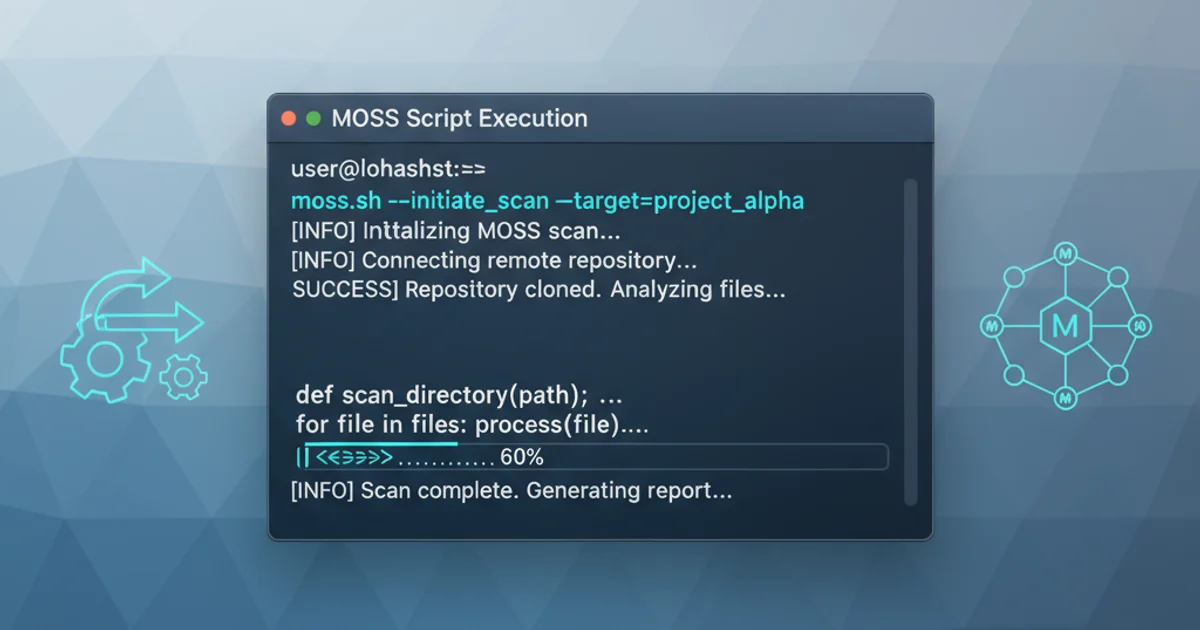How do I use the MOSS script?
Categories:
Mastering the MOSS Script for macOS System Management

Learn how to effectively use the MOSS (macOS System Script) for streamlined system administration, automation, and troubleshooting on your Mac.
The MOSS (macOS System Script) is a powerful, community-driven shell script designed to simplify various system administration tasks on macOS. From routine maintenance and software management to network diagnostics and security checks, MOSS aims to provide a unified command-line interface for common operations. This article will guide you through its installation, core functionalities, and best practices for leveraging MOSS to enhance your macOS management workflow.
Installation and Initial Setup
Before you can harness the power of MOSS, you need to install it on your system. MOSS is typically distributed as a single shell script, making its installation straightforward. It's recommended to place the script in a directory that's included in your system's PATH environment variable, such as /usr/local/bin, to allow execution from any directory.
1. Download the MOSS Script
Obtain the latest version of the MOSS script. This is usually done via curl from its official repository or a trusted source. Ensure you verify the script's integrity if downloading from an unofficial mirror.
2. Make the Script Executable
After downloading, the script needs executable permissions. Navigate to the directory where you saved the script and use the chmod command.
3. Move to a PATH Directory (Optional but Recommended)
For ease of use, move the script to a directory that is already in your system's PATH. This allows you to run moss from any terminal location without specifying its full path.
4. Verify Installation
Open a new terminal window and type moss --version or moss help to confirm that the script is correctly installed and accessible.
# Download the script (replace URL with actual MOSS script URL)
curl -o moss https://raw.githubusercontent.com/your-repo/moss/main/moss
# Make it executable
chmod +x moss
# Move to a PATH directory (requires sudo)
sudo mv moss /usr/local/bin/
# Verify installation
moss help
Commands for installing and verifying the MOSS script.
Core Functionalities and Common Commands
MOSS provides a wide array of commands categorized by their function. Understanding these categories will help you navigate its capabilities. Here's a breakdown of some frequently used commands and their purposes.
flowchart TD
A[Start MOSS] --> B{Choose Category}
B --> C[System Info]
B --> D[Software Management]
B --> E[Network Tools]
B --> F[Maintenance]
C --> C1["moss info cpu"]
C --> C2["moss info disk"]
C --> C3["moss info memory"]
D --> D1["moss brew update"]
D --> D2["moss app list"]
D --> D3["moss app uninstall <app_name>"]
E --> E1["moss net scan"]
E --> E2["moss net ping <host>"]
E --> E3["moss net dns <domain>"]
F --> F1["moss clean caches"]
F --> F2["moss clean logs"]
F --> F3["moss repair permissions"]
C1, C2, C3, D1, D2, D3, E1, E2, E3, F1, F2, F3 --> G[Execute Command]Overview of MOSS command categories and examples.
Each command often has sub-commands or options that can be explored using the --help flag. For example, moss info --help will show all available information commands, and moss info cpu --help will detail options specific to CPU information.
# Get system information
moss info system
# List installed Homebrew packages
moss brew list
# Clean system caches
moss clean caches
# Check network connectivity to a host
moss net ping google.com
# Display help for a specific command
moss app --help
Examples of common MOSS commands in action.
Advanced Usage and Customization
MOSS is designed to be extensible. Many users customize the script or integrate it into their existing automation workflows. This can involve creating aliases for frequently used commands, writing custom functions that call MOSS, or even modifying the script itself (though this should be done with caution and proper version control).
One common advanced use case is combining MOSS commands with other shell utilities to create powerful one-liners or scripts. For instance, you might want to automate a weekly cleanup routine or generate a system health report.
# Example: Create an alias for a common MOSS command
alias mclean='moss clean caches && moss clean logs'
# Example: Simple system health report script
#!/bin/bash
echo "--- System Health Report ---"
echo "Date: $(date)"
echo "\nCPU Usage:"
moss info cpu
echo "\nDisk Usage:"
moss info disk
echo "\nNetwork Status:"
moss net status
echo "--------------------------"
# Save this as 'health_report.sh' and make it executable
# chmod +x health_report.sh
# ./health_report.sh
Examples of MOSS aliases and a simple health report script.